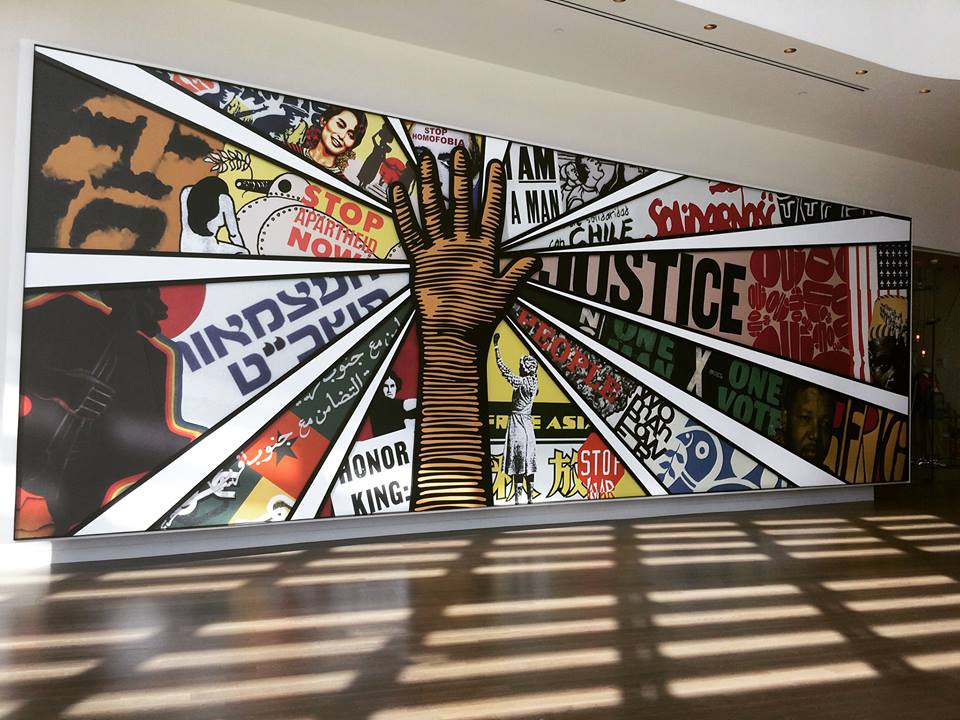Atlanta’s presence in popular culture paints a very different picture from what I found to be the reality. The image that is sold by hip-hop music and television shows is one that is not fully accessible by all, and it glosses over a number of tensions that reflect the current state of race relations in America as a whole. It must be emphasised that there is much to praise the city on, which is referred to colloquially as Hot-Lanta because of itsexciting and vibrant feel. There is no doubt that spending a year in Atlanta was the best choice I could have made. Like anyone, I had many expectations of what my year abroad would be like and my experience proved to be eye opening. There is so much that the city, has to offer – quirky areas such as Edgewood in Atlanta’s eastside or the BeltLine, clustered with independent boutiques, coffee shops and bars. It was hard to remember that such pockets of Atlanta were often a product of gentrification and I came to realise that the city was actually deeply segregated.
What was most prominent for me was the racial segregation of Georgia Tech – the university I attended – both within the campus itself and the disparity between the institution and the rest of Atlanta. For a city that is composed mostly of African Americans, only 1,406 black students enrolled in September of 2015. By such a margin, 11,571 white students joined the university, which spoke volumes about the racial divide of opportunities in the US. Hip-hop artist B.oB, who is from a city just outside of Atlanta, proclaimed during a concert that I attended that Georgia Tech is a school for which “only the upper echelons attend”. The presence of African American students was largely to be found on the basketball and football teams where they had been awarded scholarships in exchange for their talent. For many, this remains to be the only outlet into prestigious universities, which I believe are designed for the white middle classes and above.
In many places outside of campus, the racial divide changes dynamic as you travel to areas that are predominantly black. The neighbourhood of Edgewood stood out to me as somewhere that was quite difficult to visit. It is characterised by derelict and uninhabited buildings, but also by quaint brunch spots and artsy coffee shops, with murals reflecting the angst of the black population bridging the gaps between the run down and the gentrified. Edgewood demonstrated to me a cycle that is embedded in institutionalised racism. A particular mural drew upon the underrepresentation of African Americans in academia, but it was also emblematic of the situation as a whole. The artist created a simple painting of African American history books being fed through a system that both reduced and altered them. For me it constructed a metaphor that represents the corruption in place that works to disadvantage racial minorities in the US. Just a short 15-minute walk away, in the same neighbourhood, the Martin Luther King Jr. National Historic Site can be found. For a city that was a hub for the Civil Rights Movement, it is senseless to see poverty and homeless African Americans in the same neighbourhood as Martin Luther King’sgravesite. Atlanta’s black musical achievements perhaps distract from the reality of the situation in some parts of the city. It is undeniable that many rap and hip-hop successes have been born out of Atlanta, but lyrics that sell the city as a place to “see gangsters roaming” and “where the players play” sensationalise the situation and cover up its failures.
Racial tensions also frequented my everyday life in the city in the form of interactions with people both inside and outside of my classes. Aside from the most obvious strain between blacks and whites I experienced hostility towards blacks from the Hispanic population (a very small minority in Atlanta). One evening a Hispanic man warned me that a security guard, who was conversing with my friend and happened to be black, would rape her if she were not careful. In response to my horrified reaction, the man said I was naïve to think otherwise and that I had a lot to learn about racism. I was astonished to have witnessed such nonchalant and bigoted behaviour, but I came to realise that instances like this were not uncommon.
One moment that is especially memorable occurred in my Race and Ethnicity class. We were discussing the controversy surrounding Hurricane Katrina and a comment was made concerning many elderly African American’s inability to leave New Orleans prior to the disaster. It was the overarching opinion of the class that the majority of those affected by Katrina were victim to institutionalised racism, leaving them without the resources to escape the storm. A fellow student, who was a white male made an offensive comment saying “it was the people’s’ own fault if they stayed and died, if you didn’t have a car, put the elderly people in a wheelbarrow”. Again it was the blasé attitude that shocked me so much. This is not to say that these occurrences offer a complete representation of the city, but it something that cannot be ignored.
In both this class, and a class I took on the Civil Rights Movement, I was able to learn about race relations in a different light. One of the main objectives of my Civil Rights class was to move away from the traditional narrative of the movement, and to explore the longue durée of events. It is clear that the Civil Rights Movement exceeded far beyond and before the 1960s, and is still relevant today. This brings me back to the Mural I came across in Edgewood, showing society’s attempt to shrink the importance of African American history. Now more than ever there is a need to celebrate both the history and achievements of black people in America.




